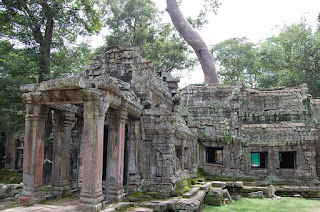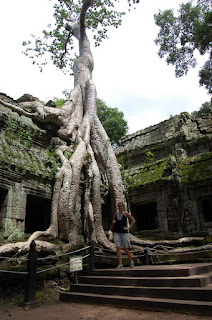Well, folks, we made it to India! Currently we are in Dharamshala, in the far northeast of the country. Dharamshala is in the foothills of the Himalayas and is also the home-in-exile of His Holiness the 14th Dalai Lama. The Tibetans have an incredible community here, and the mingling of Hinduism and Buddhism is fascinating. Despite the Tibetan's brutal persecution by the Chinese government, they are a deeply kind and optimistic people.
The Buddhist teaching of ahimsa, or non-harming, is manifest in daily life. Ahimsa applies to both physical violence but also to the violence of words and internal thoughts, which can be equally powerful and deleterious. Karen and I are volunteering with some of the Buddhist monks at a local community center by teaching English, and our time exchanging stories over momos with the men and women (!) is my favorite.
We are hoping to attend a public teaching with the Dalai Lama when he returns here on the 28th. In the meantime, we are taking the yoga and meditation classes we have so eagerly anticipated. It is misty and peaceful here, which is fortuitous as I am recovering from a somewhat serious bout of food poisoning.
For now, I also wanted to share some shots of that most deservedly cliched icon, the Taj Mahal in Agra, in the very heart of the country. Below is a shot of the back of the Taj at sunset. I challenge you to find another monument this stunning from the back.

The Buddhist teaching of ahimsa, or non-harming, is manifest in daily life. Ahimsa applies to both physical violence but also to the violence of words and internal thoughts, which can be equally powerful and deleterious. Karen and I are volunteering with some of the Buddhist monks at a local community center by teaching English, and our time exchanging stories over momos with the men and women (!) is my favorite.
We are hoping to attend a public teaching with the Dalai Lama when he returns here on the 28th. In the meantime, we are taking the yoga and meditation classes we have so eagerly anticipated. It is misty and peaceful here, which is fortuitous as I am recovering from a somewhat serious bout of food poisoning.
For now, I also wanted to share some shots of that most deservedly cliched icon, the Taj Mahal in Agra, in the very heart of the country. Below is a shot of the back of the Taj at sunset. I challenge you to find another monument this stunning from the back.

Now for the front view... The world most beautiful building has been described as a "teardrop on the face of eternity" by the poet Rabindranath Tagore. I got goosebumps when I first saw it, through the scalloped archway of the guard gate. Words really are useless here.
The Taj was built by the Mughal Emperor Shah Jahan in 1653 to mourn his third wife and great love, Mumtaz Mahal, who died giving birth to his 14th child. The greatest artists of the age were summoned from all over the world, from China to Europe to the Middle East. Unfortunately, the Shah was only able to see the finished masterpiece from his cell window in the Agra Fort across the river, put there by his third son who wanted the throne for himself.
The Shah described the Taj thus:
Should guilty seek asylum here,
Like one pardoned, he becomes free from sin.
Should a sinner make his way to this mansion,
All his past sins are to be washed away.
The sight of this mansion creates sorrowing sighs;
And the sun and the moon shed tears from their eyes.
In this world this edifice has been made;
To display thereby the creator's glory.
What do you think - do I blend in?


















































